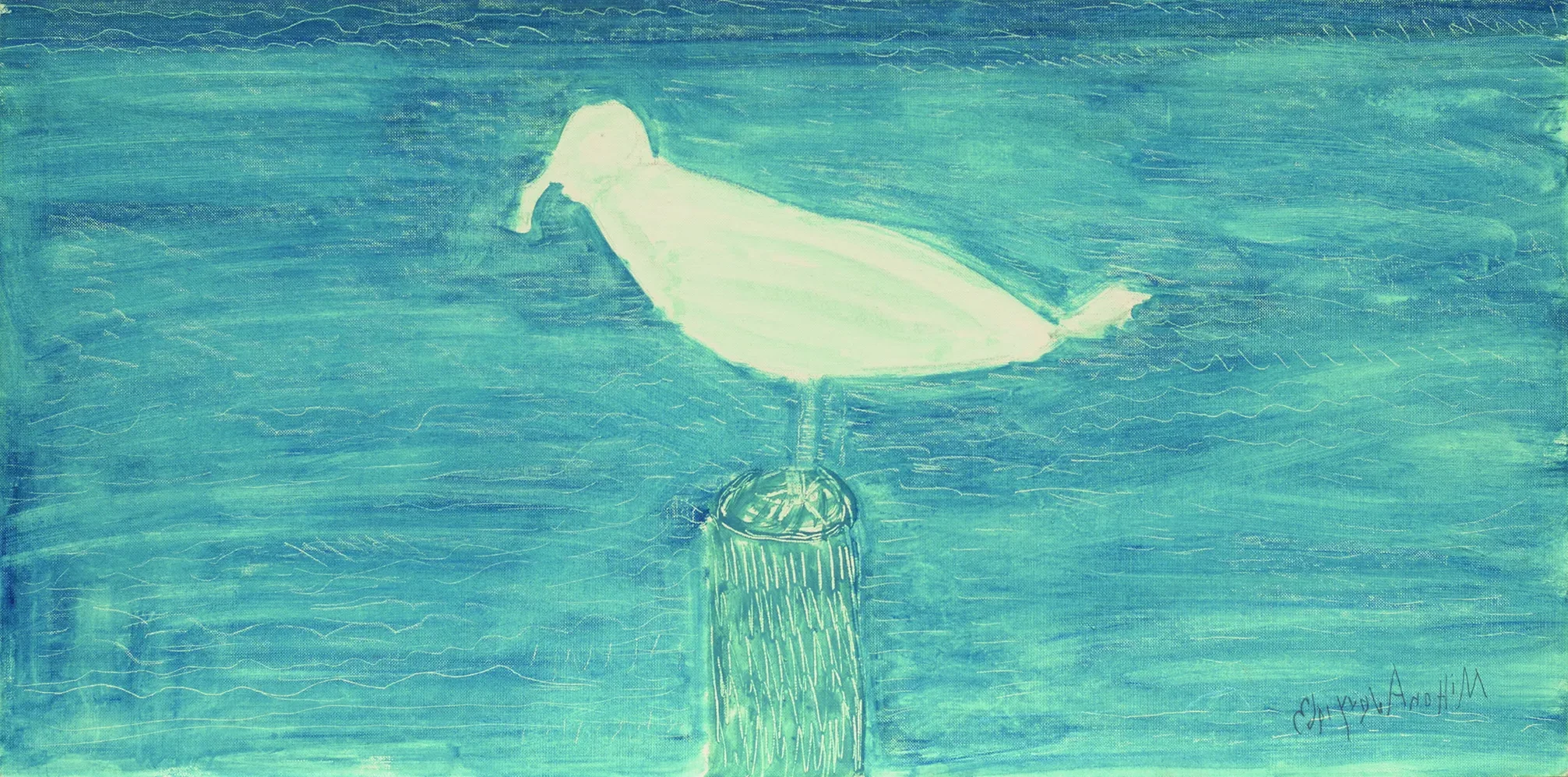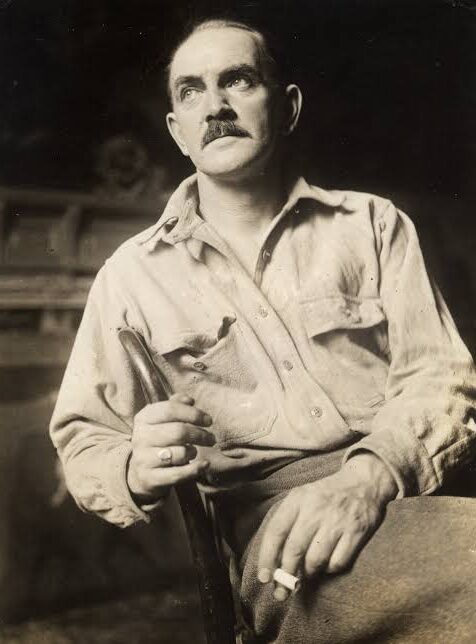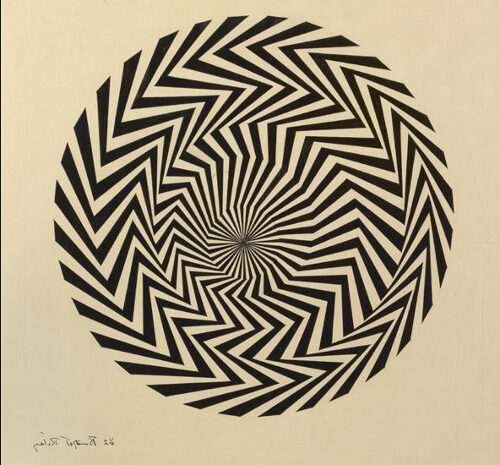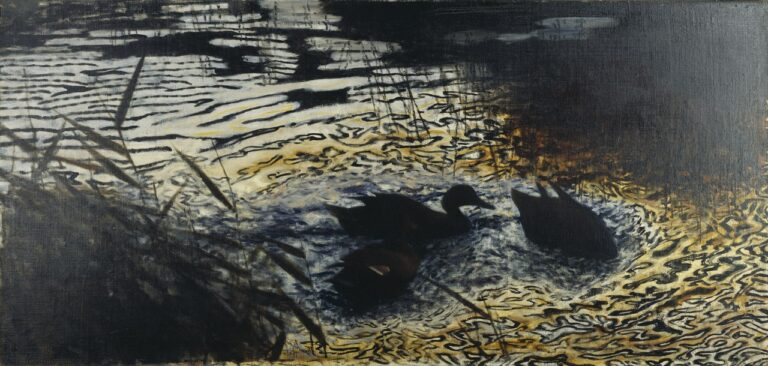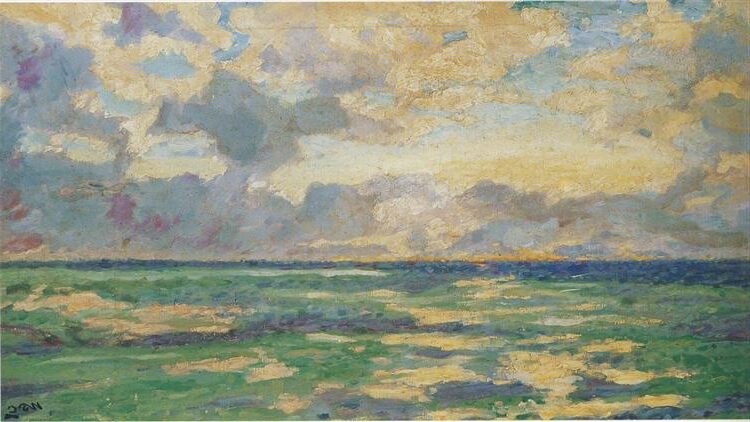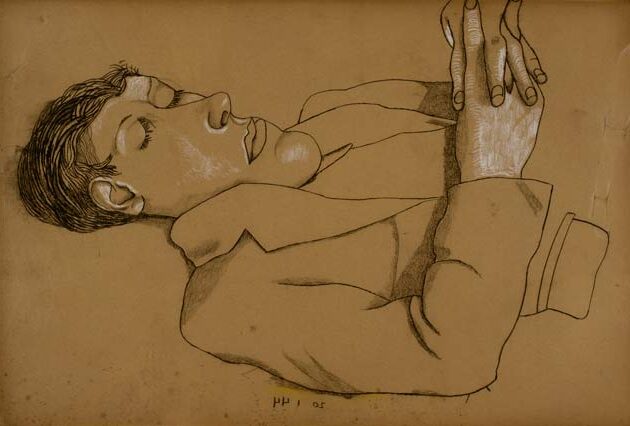Milton Avery: Painter of Color Harmonies and Modern Expressionism
Born: March 7, 1885, Altmar, New York, US
Death: January 3, 1965, New York City, US
Art Movement: Post-Impressionism, Expressionism
Nationality: American
Institution: Connecticut League of Art Students
Art Students League of New York
Milton Avery: Painter of Color Harmonies and Modern Expressionism
Early Life and Education
Milton Clark Avery was born on March 7, 1885, in Sand Bank (now known as Altmar), New York. In 1898, when he was 13 years old, Avery and his family moved to Hartford, Connecticut, where he would spend his formative years.

Reclining Reader, 1950, by Milton Avery
As a young man, Avery had to balance work and artistic pursuits. He held various jobs to support himself, working as an assembler, latheman, and file clerk during the evenings. These practical jobs provided him with the income necessary to pursue his artistic education.
Around 1905, Avery began attending the Connecticut League of Art Students in Hartford. This marked the beginning of his formal artistic training.
He remained an occasional life drawing student at the institution through 1919, developing his skills while continuing to work.
Avery later advanced his studies by taking classes at the more prestigious School of the Art Society of Hartford. This institution offered him exposure to more formal artistic techniques and contemporary movements that would influence his developing style.
Throughout his early education, Avery was able to study under notable instructors of the Connecticut art scene, developing the foundations that would later evolve into his distinctive modern style. His dedication to art education while maintaining employment demonstrates the commitment that would characterize his artistic career.
Artistic Style and Influences
Milton Avery developed a distinctive approach to painting that combined simplified forms with vibrant color relationships. His work bridges representational art and abstraction, creating a unique position in American modernism that influenced many artists who followed.
Evolution of Style
Avery’s artistic journey began with more realistic paintings but gradually moved toward greater simplification and abstraction.

Bucolic Landscape, 1930, by Milton Avery
In the 1930s, he started flattening the planes of his paintings and reducing forms to their essential elements.
By the 1940s, he had developed his mature style—recognizable subjects rendered with thin washes of color and minimal detail.
His landscapes, portraits, and still lifes featured muted yet luminous color harmonies that became his signature.
In his later works, Avery pushed further into abstraction. He reduced his compositions to basic shapes and color fields while maintaining a connection to the natural world. This balance between representation and abstraction made his work accessible yet innovative.
Key Influencers
Henri Matisse stands as Avery’s most significant influence. Like Matisse, Avery used color as a structural element rather than for realistic depiction. He admired the French master’s ability to simplify forms while maintaining visual harmony.
European modernists, particularly Picasso, also shaped Avery’s approach to composition and form. However, he transformed these influences into something distinctly American.
Among his American contemporaries, Marsden Hartley’s bold use of color and form resonated with Avery’s sensibilities. Although working independently, both artists explored similar territory in modernist painting.
Ironically, Avery himself became a profound influence on younger artists. Mark Rothko and Adolph Gottlieb, later known as Abstract Expressionists and Color Field painters, counted Avery as a mentor and friend. They adopted his sensitivity to color relationships in their own increasingly abstract works.
Career and Legacy
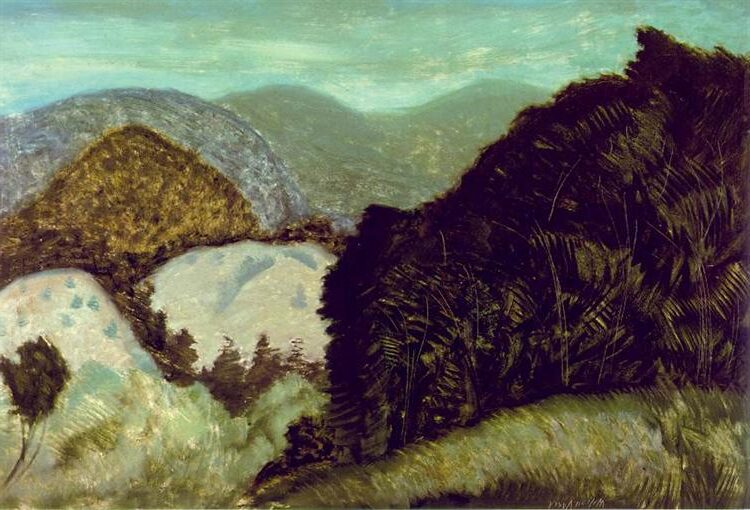
Vermont Hills, 1936, by Milton Avery
Milton Avery’s career spanned five decades, during which he created a distinctive style that influenced generations of artists. His work evolved from academic beginnings to a unique approach characterized by simplified forms and vibrant colors.
Prominent Works
Avery’s most celebrated works showcase his mastery of color and form. “White Wave” (1954) demonstrates his ability to reduce a seascape to its essential elements while maintaining its emotional impact.
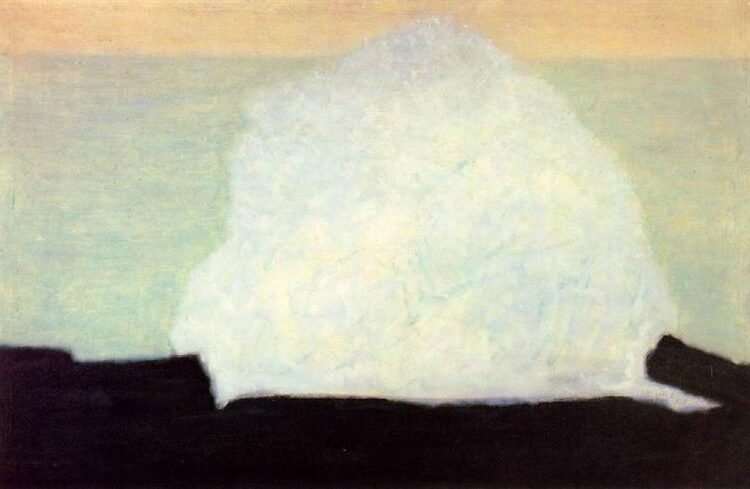
White Wave, 1954, by Milton Avery
His “Sea Grasses and Blue Sea” exemplifies his distinctive approach to landscapes, with flattened perspectives and bold color choices.
During the 1950s and 1960s, Avery created some of his most powerful works. His paintings of Gloucester shorelines reveal his deep connection to coastal landscapes. These late-period works feature increasingly simplified forms and more vibrant color relationships.
Avery was prolific, producing thousands of paintings throughout his career. His work evolved from more realistic renderings to increasingly abstract interpretations of nature, always maintaining a strong sense of tonality and composition.
Public Exhibitions and Collections
The National Gallery of Art houses a significant collection of Avery’s works, with pieces displayed in both the East Building and West Building.
Located on the National Mall between Constitution Avenue and Madison Drive, these exhibitions showcase Avery’s artistic evolution.
New York City, where Avery lived and worked for much of his career, remains a center for viewing his art. Major retrospectives of his work occurred during his lifetime and continued after his death in 1965.
Avery’s paintings are now treasured in prominent museums worldwide. His work gained increasing recognition in the decades following his death, with important exhibitions highlighting his contribution to American Modern Art.
Influence on Contemporary Art
Avery’s distinctive approach to color and form influenced many important American artists. His work bridges the gap between representational art and abstraction, creating a pathway for future generations.
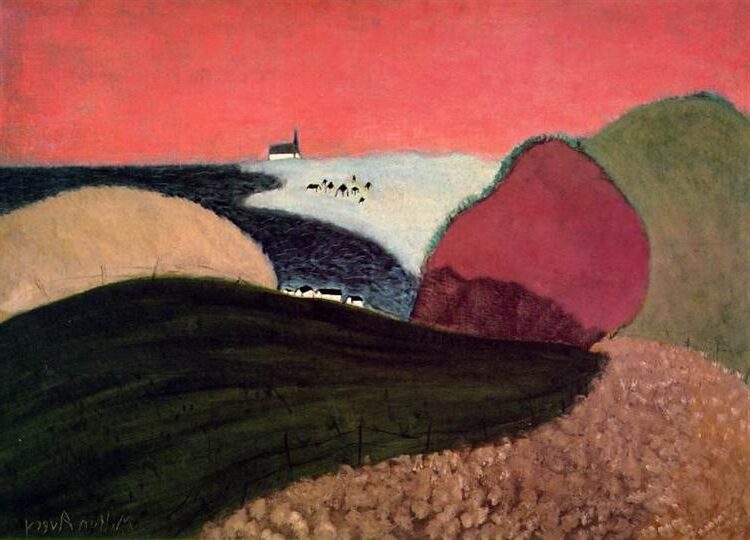
Gaspe Pink Sky, 1940, by Milton Avery
Many contemporary painters acknowledge Avery’s impact on their understanding of color relationships. His ability to convey emotion through simplified forms and bold hues created a visual language that continues to resonate today.
Avery’s art expresses a sense of shared humanity and connection to nature. Though he worked independently of major art movements, his vision anticipated important developments in American painting.
His legacy lies in his unwavering commitment to his personal artistic vision. Despite limited commercial success during his early career, Avery’s persistence and artistic integrity established him as a pivotal figure in the development of American Modern Art.
Frequently Asked Questions
Milton Avery’s distinctive artwork raises many questions about his techniques, influences, and legacy. Below are answers to some common questions about this important American painter who bridged traditional and modern art movements.
What are the notable influences in Milton Avery’s painting style?
Milton Avery developed a unique style influenced by several key movements. He absorbed elements from European modernists, particularly Henri Matisse’s bold use of color and simplified forms.
American painters like Arthur Dove and John Marin also shaped his approach to landscape. Unlike many contemporaries, Avery resisted fully embracing abstract expressionism.
Instead, he created his own path, developing a semi-abstract style that balanced representation with color-focused composition. This independent direction made his work stand apart from dominant trends.
How has Milton Avery contributed to the modern art movement?
Avery served as a crucial bridge between American realism and abstract expressionism. His simplified forms and focus on color relationships influenced younger artists like Mark Rothko and Adolph Gottlieb.
Though sometimes overlooked in art history narratives, Avery’s work demonstrated that modern art could embrace color harmony without abandoning recognizable subjects. This balance provided an alternative path for American modernism.
His quiet persistence with his unique style eventually earned recognition as an important American original. Avery’s work helped establish American painting’s independence from European traditions.
What are the typical subjects and themes in Milton Avery’s artworks?
Avery frequently painted landscapes, seascapes, and domestic scenes from his daily life. His coastal scenes with simplified forms and harmonious color schemes became particularly distinctive.
Family portraits, especially of his wife Sally and daughter March, appear throughout his career. These intimate works reveal his warm connection to family life.
As his style evolved, Avery increasingly reduced detailed elements to their essential forms. His later landscapes became more abstracted, focusing on color relationships while maintaining recognizable subjects.
How do experts evaluate the value of a Milton Avery painting?
Auction values for Milton Avery’s work vary widely based on several factors. According to search results, even his prints can command $200-$300 at auction or up to $600 in galleries.
Original paintings, especially those from his mature period of the 1940s-50s, typically bring much higher prices. His most sought-after works feature his signature bold color fields and simplified forms.
Provenance, exhibition history, and condition significantly impact valuation. Authentication is crucial, as Avery’s distinctive style has attracted imitators.
In which major art collections can Milton Avery’s work be found?
The Metropolitan Museum of Art in New York holds significant Avery works. The Museum of Modern Art (MoMA) also displays important pieces from his career.
The Phillips Collection in Washington DC maintains a strong relationship with Avery’s work. Founder Duncan Phillips was an early supporter who helped establish the artist’s reputation.
The Wadsworth Atheneum in Hartford, Connecticut features Avery’s art, reflecting his connection to the region where he spent his formative years. Many university art museums across America also include his paintings in their permanent collections.
What was the significance of Sally Michel Avery’s role in Milton Avery’s life and work?
Sally Michel was both Avery’s wife and a significant artistic partner. Their marriage in 1926 began a lifelong creative collaboration and support system.
Sally’s work as a freelance illustrator provided financial stability. This allowed Milton to focus on painting full-time. This practical support proved crucial to his artistic development.
Beyond financial support, Sally served as a creative influence and critic. The couple’s artistic dialogue helped shape Milton’s distinctive approach to color and composition. Their partnership was essential to his success.

